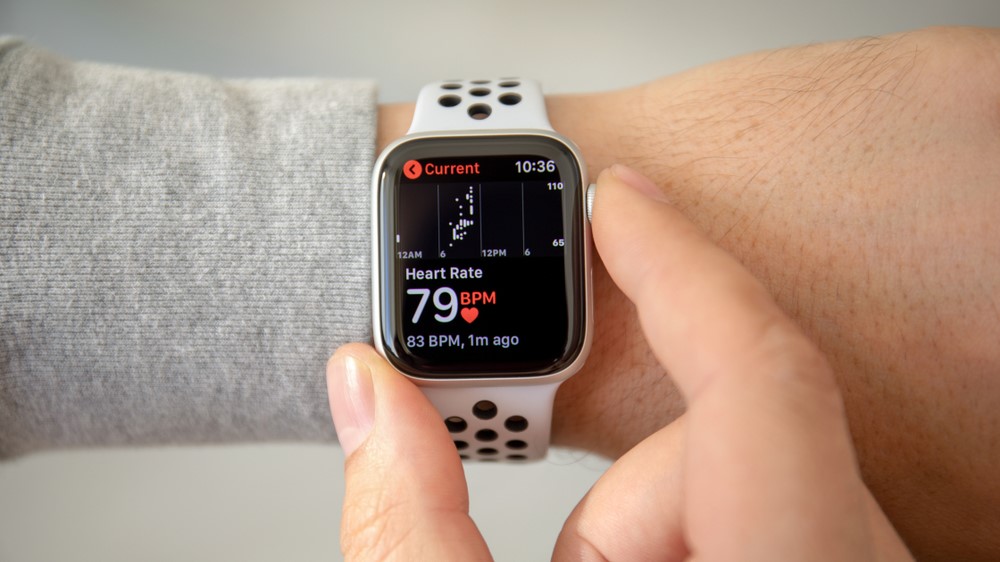What is a normal resting heart rate, and how can you measure yours?
As an important measure of health, it’s useful to know the ins and outs of your resting heart rate

Your heart is an incredibly essential organ, beating around 100,000 times every day, or 35 million times a year. Every time your heart beats, oxygenated blood and essential nutrients are pumped around the body to other organs and muscles. At the same time, waste products and carbon dioxide are pumped back up to the heart.
The amount your heart beats varies depending on what you’re doing and the amount of energy (from oxygenated blood) that your body requires. When you exercise, for example, the heart will beat faster to pump more blood around the body, providing more energy to the muscles. Your heart continues to work even when you’re asleep or resting, and it’s at this point that you can decipher your resting heart rate.
Your resting heart rate can be one of the useful elements in determining the state of your health, with various factors influencing your resting heart rate. There are also some lifestyle changes that can be implemented to help improve your resting heart rate. If you’ve purchased one of the best fitness trackers, and you’re wondering what your resting heart rate should be, we’ve got you covered.
What should my resting heart rate be?
Your heart rate is the number of times your heart beats per minute (bpm). According to the American Heart Association, a normal heart rate is between 60 and 100bpm when resting, or sitting still.
Your resting heart rate will vary slightly depending on when it’s measured and also, what you were doing before the reading. If for example, you’d just been for a jog, then it might take a little while for your heart rate to come right back down to its rested state.
Your level of fitness tends to dictate your resting heart rate, as do your stress levels. In fact, people who are super-fit often have resting heart rates below 40 bpm.
Other factors such as illness and medication can also play a part in your resting heart rate. For example, beta-blockers slow down the heart, whilst medication for depression might heighten it.
Sign up to get the BEST of Tom's Guide direct to your inbox.
Get instant access to breaking news, the hottest reviews, great deals and helpful tips.
Generally, a lower resting heart rate (medication aside), indicates a stronger heart and a fitter cardiovascular system. There are also other benefits: one study actually suggested that a lower resting heart rate could offer some protection against heart attacks for perimenopausal women.
How can I measure my resting heart rate?
There are a few ways you can measure your resting heart rate. Using one of the best fitness trackers is a good start, or you can visit your doctor, who will check it for you. You can also measure your resting heart rate without any gadgets. To do this, sit somewhere comfortable, where you feel relaxed. Wait a few minutes to allow your heart rate to fall — even if you’ve only been walking around your home, your heart rate will have risen, so if you measure it straight away your reading won’t be correct.
Place one of your forearms on a table or arm rest, with your palm facing upwards. Next, place the pads of your index finger and middle finger of your other hand, on the inside of your wrist, just below the crease where your wrist meets your hand. Press your fingers down until you can feel a pulse. Then, for 30 seconds, count the number of beats. After 30 seconds, multiply this number by two for your heart rate bpm. If you prefer, you can count the number of pulses across a whole minute.

If you want to delve a little deeper into the workings of your heart, it’s worth checking the rate at which your heart rate returns to its resting state after a period of activity or exercise. The fitter and ultimately more efficient your heart is, the quicker your heart rate will return to normal.
A word of caution: if your heart rate seems irregular, it’s worth visiting your doctor, just to be on the safe side. Plus, if your resting heart rate is outside of the normal range, and you’re experiencing dizziness or shortness of breath, then it could be a sign of something more serious.
How can I improve my resting heart rate?
One of the main ways of lowering your resting heart rate is through exercise. High-intensity exercise is needed to strengthen the heart and lungs, improving the efficiency of blood transportation throughout the body and lowering your resting heart rate.
To ensure that your heart is in the right exercise ‘zone’, try to work out at 50-70% of your max heart rate, as a minimum. Your maximum heart rate is typically 220 minus your age. So, if you’re 30 years old, your maximum heart rate is 190bpm. As your heart becomes more efficient and you become fitter, try to increase the intensity and work your heart harder, to further lower your resting heart rate.
If you’re a coffee-lover, or you thrive on stress, you might want to consider lowering the amount of caffeine you consume, as well as managing stress levels. Both of these can cause your heart rate to soar, which can leave you with a higher-than-normal resting heart rate.
Looking for workout inspiration? Why not boost the intensity of your home workouts with one of the best workout apps, or by adding one of the best exercise bikes to your routine. Alternatively, we’ve found some of the best running shoes on the market to get you moving, and the best adjustable dumbbells for weightlifting at home.
Lucy is a freelance health and fitness journalist as well as a pre and post-natal personal trainer. Although a sweaty gym session (skipping rope is a must) is her favorite way to ‘relax’, she’s also a fan of bingeing on The Office, snacking on chocolate-coated raisins, and fizz-filled brunches with friends.

